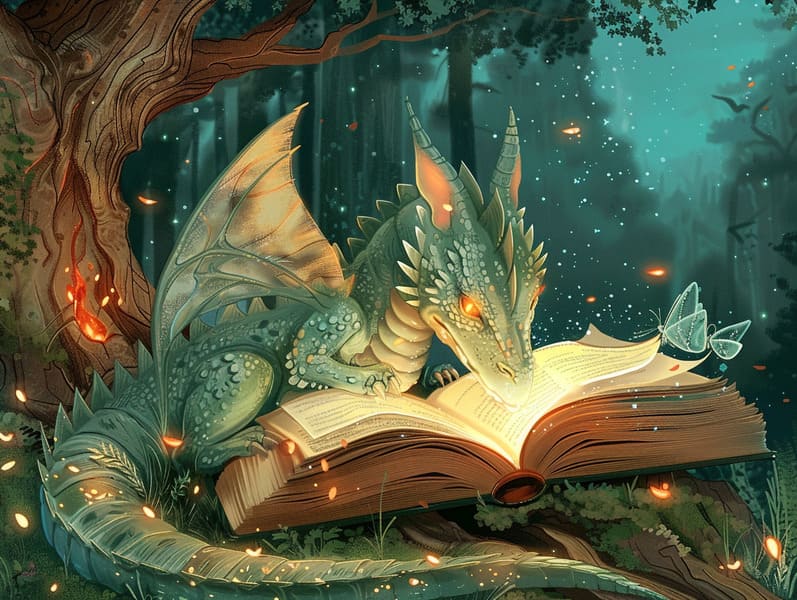Uncovering the Past of Traditional Fairy Tales and Its Perpetual Splendor.
Uncovering the Past of Traditional Fairy Tales and Its Perpetual Splendor.
Blog Article

Fairy tales for kids have timeless appeal. These narratives have been spoken from one generation to the next long before they were ever documented. They arose from a variety of backgrounds, including European traditions. They were initially told among grown-ups, often carrying themes and messages concerning the societal norms and beliefs of the time.
The Grimm brothers, Jacob and Wilhelm (the Grimm brothers), were among the first to compile and publish many of these beloved stories. Their volume, "Grimm's Fairy Stories," included stories like "The True Bride," "Little Brother and Little Sister," and "The True Story of Snow White," which have since become cornerstones in the world of classic fairy tales. Similarly, Andersen's imaginative stories, such as "The Little Mermaid," and "The Duckling's Story," have floated into hearts worldwide, ensuring their place in the pantheon of iconic fairy tales.
Despite their age, these tales remain as important as ever, especially as children's bedtime stories. These delightful tales are now available in multiple formats, including vibrantly illustrated books, delightful animations, and free fairy tales online.
Their lasting presence can be connected to several enchanting factors:
Vital Lessons: Old fairy tales often share important moral lessons. Narratives like "The Shepherd Boy and the Wolf" teach the merit of honesty, while "The Tale of the Tortoise and the Hare" point out the benefits of determination and meekness. These tales offer children clear distinctions between correct and incorrect, helping to shape their moral compass in a mild yet important way.
Compassion and Knowledge: Classic fairy tales frequently include individuals facing challenges and struggles, inspiring kids to comprehend with their struggles and boost their triumphs. For instance, "The Story of Beauty and the Beast" emphasizes the merit of seeing beyond looks to realize the true being of a character, nurturing tenderness and knowledge.
Cultural Knowledge: Many old fairy tales are infused with the cultural contexts from which they arose. Discovering these stories can provide enlightening views into different social structures, building a sense of world understanding and acknowledgment.
Imagination and Innovation: The imaginative elements in ancient fairy tales—enchanted forests—ignite children’s creativity. These narratives guide readers to fantastical realms, fostering fantasy dreams and a sense of curiosity that lasts a lifetime.
Old fairy tales are not only whimsical but also educational. They function as enchanted tools in developing various intellectual and emotional capacities in the young. When ancient fairy tales are spoken out loud, they enhance language development by introducing new words and detailed sentence structures. This practice also enhances auditory skills and concentration, as the young pay close attention, prepared to see what happens next.
Furthermore, debating the themes and characters of fairy tales can promote intellectual skills and thinking skills. Children are led to detect patterns, forecast, and realize cause and effect. These debates also further children articulate their thoughts and feelings, enhancing their emotional intelligence.
In today’s cyber age, the abundance of internet fairy tales has made these tales more acquirable than ever. Internet resources and software offer broad selections of timeless fairy tales that can be seen or listened to anytime, anywhere. Fairy tales recited are particularly widespread, offering an fascinating method for young readers to take part in these bewitching tales. Sound books and read-out-loud stories bring characters and settings to life, often paired with fantastical musical scores and background music that improve the tale-telling adventure.
The timeless appeal of classic fairy tales lies in their ability to adjust to modern times while sustaining their central values. Contemporary reimaginings of these stories often introduce more representative characters and modern settings, making them accessible to today’s audience. However, the essential messages of courage, kindness, and rightness remain unchanged, continuing to move children of all ages.
Traditional fairy tales also offer a sense of protection and closeness. They share a neat narrative with a apparent beginning, middle, and end, often ending with the closure of conflicts and the triumph of rightness over wrongness. This regularity can be reassuring for young readers, affording a sense of consistency in an constantly changing world.
Classic fairy tales continue to allure and train new generations, maintaining their splendor and significance in modern society. As children's night stories, they make available a perfect blend of charm and enlightenment, fostering moral values, empathy, and creativity. The abundance of web-based fairy tales and the favor of fairy tales recited secure that these ancient stories remain available to new generations.
By protecting and making known these stories, we continue to revere the rich tapestry of creativity and cultural heritage. Whether you are perusing a beautifully illustrated book, accessing a virtual collection, or listening on an spoken story, the grace of old fairy tales is always fairy tales within reach. These stories teach us of the ageless essence of fairy tales and its ability to unite us across generations and cultures.
Whether you are exploring a vividly illustrated book, accessing a digital library, or listening to an audio story, the magic of famous fairy tales is always within reach.
These fairy tales remind us of the immortal essence of fairy tales and its ability to unify us across centuries and lands, forming a connection that fascinates and enlightens alike.